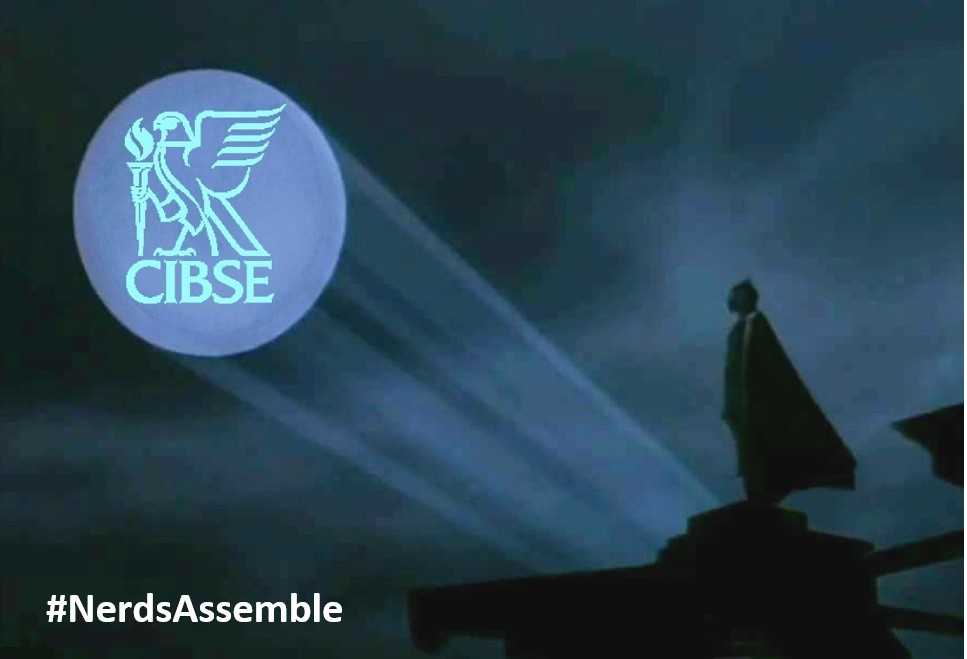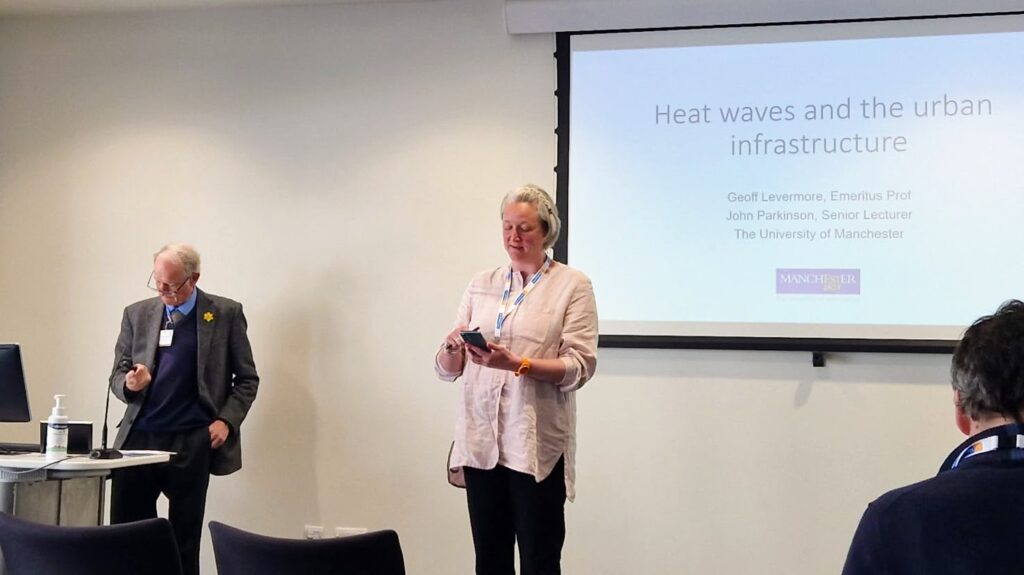CIBSE Technical Symposium 2023

This year’s technical symposium took place at Strathclyde University, Glasgow last week (20-21st April). Claire and I both made the journey up from London (by train #VirtueSignalling) as it’s our favourite CIBSE event of the year.
For me, the theme that emerged from this years event can be summed up with these three quotes:
💬 Casey Cole: “You can’t improve what you don’t measure.”
💬 Annie Marston: “Buildings just get left.”
💬 Narguess Khatami: “Building owners don’t know the buildings that they have.”
I have been working in this industry for 23 years and we are still talking about closing the loop, but the pesky loop remains stubbornly un-closed. We still don’t routinely pay attention to how our buildings perform once we’ve built them. The ‘we’ here includes designers, but also building owners and managers who are commonly preoccupied by other aspects of building operation and don’t spend as much time on energy performance specifically. And yet, we are in a climate emergency, with spiralling energy costs that are unlikely to plummet any time soon.
I’ve been watching presentations on ‘lessons learned’ from post-occupancy evaluation throughout my career, and when people look, they ALWAYS find something that can be improved. We are not going to close the performance gap until we can get over the embarrassment/humiliation that the gap exists and that finding examples of it makes us look bad. The shift towards performance targets such as EUIs (Energy Use Intensity measured in kWh/m²/yr) that can be tested in-use using simple meter readings is gaining traction (finally), and this should help make substandard building performance more apparent.
I’ve had countless conversations about what goes wrong in buildings and I’m hoping to see a paper being presented at next year’s event on the most common pitfalls and how to avoid them (you know who you are!). I also think there’s scope for CIBSE to provide advice to designers on how to outline performance intent for a building, and define the simple metrics that operators could look at to ascertain whether it’s on track. These could be bespoke alarms programmed into a BMS or suggestions for what to watch for in the meter reading regime. What strikes me is how often the problems are not subtle, they are really chunky low-hanging fruit with massive cost and energy-savings attached to fixing them. They are often obvious when you look for them (with the right people looking) but are so often missed because nobody looks.
My highlights from this years symposium papers include:
Annie Marston from REsustain (session 8): “A comparison of forecast energy reduction through control optimisation in an existing building with actual data from the optimised building.”
Annie showed a case study where £100k in energy costs and 146 tonnes of CO2 were saved by reconfiguring how a 17,000m² office building was controlled without changing any of the installed HVAC equipment. This was done by modelling the building to better understand the problems and test different control options – particularly for the mid seasons when simultaneous heating and cooling was more prevalent – before applying them successfully to the live building.
Ashley Bateson from Hoare Lea (session 16): “The influence of culture in sustainable building design: lessons for policy makers, planners and building managers”
Ashley explored a series of cultural metrics (numeracy, environmental awareness, influence of professional expertise, collectivist versus individualist values, inclusion) from different European countries and considered whether these might have a bearing on the relative performance of those countries against sustainable building indicators (building energy consumption, air tightness standards, water consumption, fuel poverty, acoustic insulation standards). The conclusions suggest that countries have the best performing buildings where there are higher levels of technical competency and numeracy, higher environmental awareness and connection with nature, greater recognition of qualifications and competency in the construction and property management sector, emphasis on the importance of shared, long-term objectives, and where the perspectives of diverse stakeholders are included in policies. Definitely worth a look at if only for the map of Europe coloured by collectivist versus individualist cultural values.
Chris Twinn from Twinn Sustainability Innovation (session 19): “Home energy retrofit: LETI researches a new paradigm”
Chris’ paper was on work undertaken by the LETI retrofit 2 workstream which is focused on retrofit at scale: “how Many, how Deep, at what Cost”. This work is setting out proposals for a ‘LETI Basic’ retrofit standard based on a 7-day retrofit program that halves space heating demand, improves air tightness and insulation values in the most cost-effective ways (e.g. where double glazing is already installed, hinges and seals are replaced rather than the whole units), includes a simple MVHR, replaces gas boilers with an Air Source Heat Pump and a heat battery that will fit in the same slot that the boiler previously occupied. Their research suggests all this can be achieved for 65% less cost than a full net zero retrofit (cost of LETI basic currently estimated at £18k including ASHP and professional fees). This strikes me as tremendously exciting (despite the non-trivial cost) as most of us can’t face or afford the type of deep retrofit needed to achieve exemplary performance, and that is a huge barrier to upgrading the 27 million existing homes in the UK. Definitely worth a read of this paper and look out for the LETI publication coming soon!
There were many other papers, but for me there was quite a lot of showing off great projects without enough sharing of lessons learned that might be applicable to other projects. The joy of the symposium is learning from others in really practical ways; being generous with what we have found out helps to propel the industry towards better, quicker. I will work harder this year to encourage more people to submit useful papers for next year (rumoured to be in Cardiff next spring). Please write a paper on something you’ve recently learned!
A further highlight this year was receiving a medal 🥉, but more of that in our next post…
Many thanks to the organisers for another great event – see you next year!
All papers and presentations can be downloaded from this link: https://onedrive.live.com/?authkey=%21AMNJ7%2D5BU974%5F8A&id=6B79DF0A766EEA4E%21290&cid=6B79DF0A766EEA4E
Our write ups of previous CIBSE technical symposia are available by typing ‘symposium’ into our website search box.
Here’s a link to last years: https://inklingllp.com/2022/04/25/techsymp-2022/


 Posted by Susie Diamond
Posted by Susie Diamond- Posted in CIBSE, Claire Das Bhaumik, Events, Research, Susie Diamond
 Apr, 25, 2023
Apr, 25, 2023 Comments Off on CIBSE Technical Symposium 2023
Comments Off on CIBSE Technical Symposium 2023

 Susie: 07972 263 676
Susie: 07972 263 676
 Join Us On In.com
Join Us On In.com
